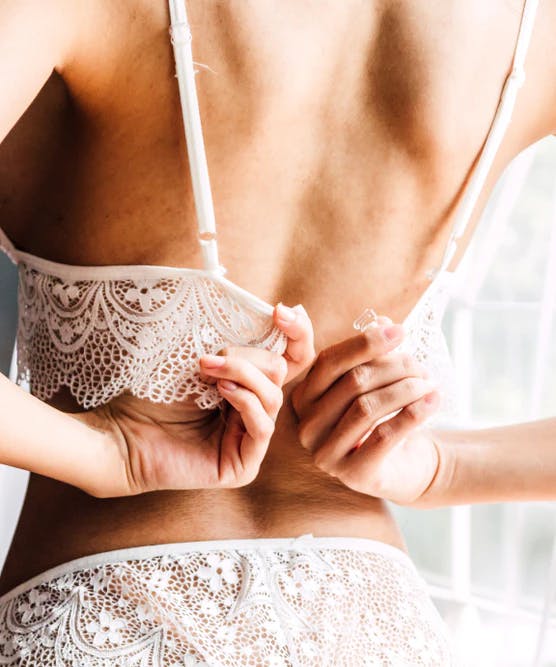Does Going Braless Really Help Prevent Your Breasts From Sagging? Here's What You Should Know
Most women were given a bra at a fairly young age, but there are many claims today that say going braless can actually help preserve your breasts and nipples. Is there any truth to this?

The bra as we know it today was first patented in 1914 by a woman named Mary Phelps Jacobs, who needed a new garment to wear to a dance. Although women had been supporting their breasts in their own way for centuries, the brassiere (which translates to "upper arm" in French) has only really been around for the last 100 years or so. We've since been given many different variations of the bra, from the bralette to the sports bra to the classic push-up bra, each of them promising to give us some kind of necessary support as we go about our daily lives. But in recent years, we've heard murmurs that the bra is really not as helpful as it's made out to be. In fact, it could be doing our breasts some harm. At least, that's what viral TikToks tell us. So what's the truth about the modern bra? Should we ditch it?
Does Going Braless Really Help Prevent Your Breasts from Sagging? Here's What You Should Know
A viral TikTok from @arlaxh spread across the internet last year, making women rethink whether they should wear a bra every single day. "Whoa! Nipple alert. Apparently, when women stop wearing bras, this happens. Their nipples get lifted seven millimeters? I haven't been about that no bra life, but this is making me reconsider. Wow," she said in the video. She shared a graphic from The Biohacker that claimed a study showed women's nipples lifted seven millimeters when they ditched the bra.
"Professor Jean from the University of Besancon states that bras interfere in blood circulation, so in the case of women who do not wear them, the amounts of collagen increased, and the elasticity is improved," the graphic read.
Some women in the comment section claimed this was very true indeed. "I haven't worn one in 20 years - I have zero sag. I'm a huge believer in this," one woman said. "Since working remote, this is true," another woman chimed in. "I stopped wearing one a year ago and it's definitely made a huge difference," another woman commented.
However, there were just as many comments from women who either had the opposite experience personally or had heard that this was just a myth that had already been busted. "I can confirm this doesn't work for everyone," one woman said. "This has been proven false," another woman said. "From experience... not true, other way around," a woman commented.
Physician Waqas Ahmed, MD, told Real Simple that it's not so black and white. Bras can actually help your breasts be supported and stay upright.
"There's a ligament called Cooper's ligament that anchors around the breast tissue," he said. "This causes more movement and bouncing around. In my opinion, the breasts will sag and get loose if a bra isn't worn for a long time." Plus, if you have larger breasts, not giving them any support for a long period of time can cause some back pain that you probably don't want to deal with.
However, it's not good to wear a bra all the time. This can cause "increased sweating, which will clog the skin pores and cause irritation and itching." Taking off the bra time and again can help improve blood circulation as well. One more benefit to taking off your bra sometimes is that your body will naturally learn how to support your breasts on its own. Your breasts may look like they're sagging more when you first take off your bra, but eventually, the muscles in your chest will "take over the support of your softer tissue that makes your breasts," which will strengthen the ligaments and end up providing you with more natural support.
The bottom line is there's a middle ground that is good to aim for when you're considering breast health. If you can go braless at home and be more comfortable (and let your breasts just breathe and relax), go for it. But you intuitively know when it's time to strap them in again and provide them with the proper support.